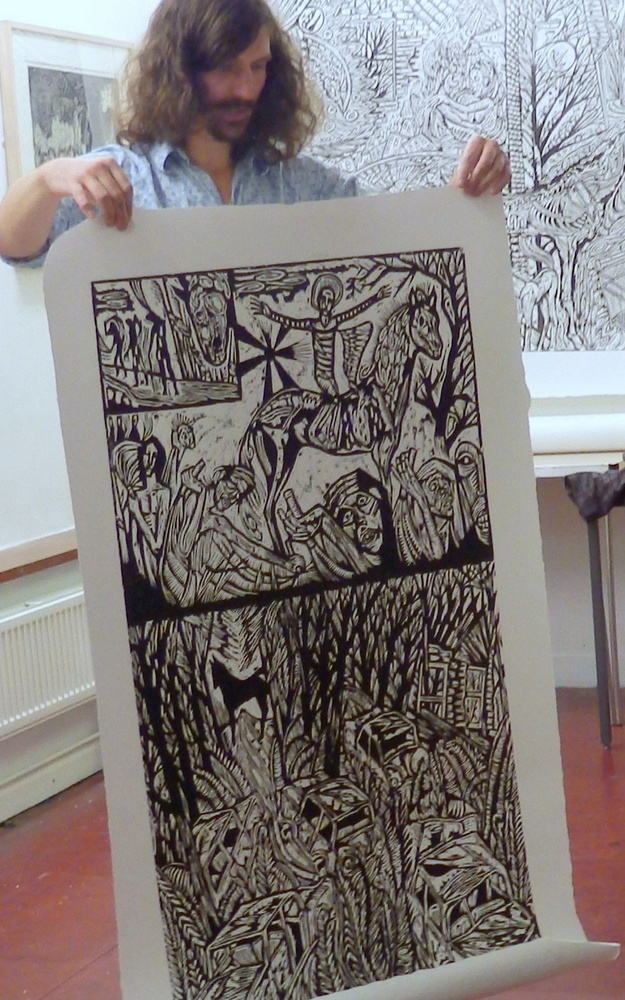A plank or block of wood with a flat parallel surface is selected. Originally wood was only available cut along the grain or cut across it. The plank wood cut along the grain has hard and soft areas related to the growth of the tree. It is therefore less predictable to cut into. Wood cut across the grain is usually reserved for finer work like wood engraving. Nowadays there are a wide variety of wood products available plywood, block board, veneered ply, medium density fibreboard (MDF), hardboard and chipboard all offer advantages in terms of grain or texture.
Woodcuts are suitable for a more robust approach than lino , the direction of the grain plays an important part in the type of mark that can be made for example cutting across the grain causes a splintered edge to the line. It is a hugely versatile medium with a wide range of approaches, from very free expressionist cutting to meticulous and detailed engraving.
Cutting tools, knives, motorised power tools can be used to cut a design into a flat block of material leaving the image as a raised surface.
Using MDF



Artists have capitalised on all the commercial block wood that is now available in builders supplies. MDF is particualarly suited if you need a a very large flat surface.
John Abell is an artist who has an amazing range of large prints which are now collectors items. Check out our John Abell page and the link to a Utube video of his visit here at the studio
Woodcut History
The woodcut is the earliest and most ancient method of making a print. The Chinese first developed true printing thousands of years before other civilisations. In the 15th Century it was used extensively in Europe to print illustrated texts. After the development of moveable type it was used very largely in an illustrative capacity as it could be made the same height as the type and printed alongside the text. Artist such as Albrecht Durer disseminated his work widely through woodcuts which were cut by professional craftsmen after he had drawn on the block. The technique was overtaken by engraving and woodengraving as a more subtle process of reproduction. It enjoyed a revival at the end of the 19th Century through the interests of artist printmakers as a very direct method of working. Access to a wider range of products in the 20th Century has seen yet another renaissance through such artists as Emma Stibbins who uses very very large sheets of plywood for her prints.
